Pokémon breeding guide
Since the second generation of Pokémon games, Pokémon have been able to reproduce
to create new Pokémon. Pokémon can learn new moves through breeding, and furthermore some Pokémon are only obtainable with this method.
The basics
Breeding occurs at the Pokémon Daycare. If two compatible Pokémon are left with the daycare lady, they will produce an egg. (The games are purposely vague about how this happens.) Pokémon are compatible for breeding if:

- They are not legendary Pokémon, baby Pokémon, Unown, Nidorina or Nidoqueen.
- They are of opposite genders.
- They are in the same egg group (see table).
A Pokémon meeting the first criteria can also breed with Ditto. Genderless Pokémon can only breed with Ditto.
Once you take the egg and walk around with it for a while, it will hatch into a level 1 Pokémon (or level 5 in Generations 2-3). The Pokémon that hatches will be the same species as the female, but at the bottom of the evolutionary chain. For example, breeding a female Blastoise with a compatible Pokémon would generate a Squirtle egg. In the case of Ditto, the Pokémon egg will always be the non-Ditto Pokémon - so if you breed Ditto with a male Charizard, the egg would be a Charmander.
Exceptions
There are two sets of male-female counterparts: Nidoran♀/Nidoran♂ and Illumise/Volbeat. Breeding one of these with a compatible Pokémon will give you either the male or female variant. For example, breeding a male Golduck with Nidoran♀ would yield either Nidoran♀ or Nidoran♂.
Note that in Generation 2-4 breeding the male variant with Ditto only produces a male egg.
Some Pokémon also produce variable eggs, based on the item held by the parent. When a particular Incense is held, the offspring will be a baby Pokémon, otherwise it will be the next stage up in the evolutionary line. For example, breeding a female Roserade will produce a Roselia egg, but if the Roserade is holding a Rose Incense, it will produce a Budew egg. See the list of baby Pokémon below for details.
The Pokémon Manaphy and Phione are listed in the Water 1 and Fairy egg groups, however they cannot breed with others in that group, only with Ditto. For each of them the result is a Phione egg, but Phione does not evolve into Manaphy.
Passing down moves
The main purpose of breeding is usually to obtain a Pokémon that knows certain moves. If the male Pokémon knows moves that the baby Pokémon is capable of learning, the baby will know them when it hatches from the egg. Prior to Generation 5 this was a good way to reuse
TMs that you taught a Pokémon and cannot re-obtain (TMs are no longer passed down by breeding).
The baby will know any move that it learns at level 1. If both parents know a move that the child would learn by level up, the child will also know it upon hatching. For example, breeding two Ampharos knowing Thunder will deliver a Mareep knowing Thunder at level 1.
 Furthermore, there are some moves Pokémon can only learn by breeding - these are called egg moves, and are listed in our Pokédex alongside the other moves. In most cases, another Pokémon in the same egg group learns the move by level up and can pass it on by breeding, but sometimes you need to
Furthermore, there are some moves Pokémon can only learn by breeding - these are called egg moves, and are listed in our Pokédex alongside the other moves. In most cases, another Pokémon in the same egg group learns the move by level up and can pass it on by breeding, but sometimes you need to chain breed
from one Pokémon to another to another.
If there are too many candidate moves that the baby can learn, they follow this precedent, with each new move overwriting previous ones:
- Level 1 moves.
- Moves that the child learns by level up, if both parents have them.
- In Gen 2-5 only, any compatible TMs or HMs moves known by the father.
- Any egg moves known by either parent (or the father only in Gen 2-5).
Passing down abilities
A female Pokémon (or male when bred with Ditto) has a 60% chance of passing down its ability to the offspring; otherwise the offspring's ability is randomly chosen from its regular abilities. In practice, this means that if the parent has a regular ability, there is an 80% chance the child has the same ability slot (60 + 20) and 20% chance it has the other slot. For hidden abilities, the child has a 60% chance of having its hidden ability and 20% chance for each of its regular abilities (or 40% if it only has one regular ability).
Note that the ability itself may be different if the Pokémon evolutions have different ability options. For example, Poochyena has the abilities Run Away or Quick Feet, while Mightyena has Intimidate or Quick Feet. A Poochyena bred from a Mightyena with Intimidate has an 80% chance of having Run Away and 20% chance of Quick Feet. If the Mightyena has Quick Feet, Poochyena has an 80% chance of Quick Feet and 20% chance of Run Away.
Note that in Gen 3-4, the ability of the hatched egg is randomly chosen from the two possibilities (50% each) regardless of the parents' abilities. In Gen 5, only females could pass down abilities; males bred with Ditto reverted to the 50/50 chance for each ability.
Passing down natures
Pokémon can also inherit natures while breeding. Normally the nature is chosen at random from the 25 possibilities, but as natures raise and lower certain stats, often you will want a specific nature. So if a Pokémon is holding the Everstone item, its child is guaranteed to have the same nature. (If both parents hold an Everstone the nature is chosen at random between the two.)
Note that prior to Pokémon Black 2/White 2, natures only have a 50% chance of being passed down. In Emerald it only applies to the female parent or Ditto. And in Gen 4 both parents must be from the same language game.
Passing down IV stats
From Generation 3 (Ruby/Sapphire) onward, Pokémon offspring will also inherit some of the Individual Values from the parents. (IVs are hidden values that improve your final stats.)
The baby will inherit three stats from either parent. So if you were breeding a male Infernape and female Ninetales, the resulting Vulpix could inherit the HP and Defense IVs from Infernape and the Speed IV from Ninetales.
The IVs chosen are random and in the case of the same one being selected twice, the former would be overwritten with the latter. For example, if the game chose Ninetales' HP and Attack, then Infernape's Attack, then the baby would only inherit two IVs - the HP from Ninetales and Attack from Infernape.
From HeartGold/SoulSilver onward a new mechanic was added to control this. If either parent is holding one of the EV-training Power
items then the child will inherit the corresponding IV. Two different IVs are randomly inherited from the parents as normal, and the remaining three are completely random. If both parents hold a Power item then one of the two stats is chosen at random. The power items are:
 Power Weight (HP)
Power Weight (HP)
 Power Bracer (Attack)
Power Bracer (Attack)
 Power Belt (Defense)
Power Belt (Defense)
 Power Lens (Sp. Attack)
Power Lens (Sp. Attack)
 Power Band (Sp. Defense)
Power Band (Sp. Defense)
 Power Anklet (Speed)
Power Anklet (Speed)
So for example, holding the Power Belt means the baby will inherit the Pokémon's Defense IV and two random non-Defense IVs from either parent.
From X/Y onward, a parent holding the Destiny Knot item causes the baby to inherit five IVs from that parent. If the other parent holds a Power item, the baby will inherit the corresponding IV and then four random IVs from the Destiny Knot parent.
Baby Pokémon
Some Pokémon may only be obtained by breeding - these are known as baby Pokémon
. Many baby Pokémon can be obtained in the wild in later games. Several baby Pokémon also require an item to be held by the parent.
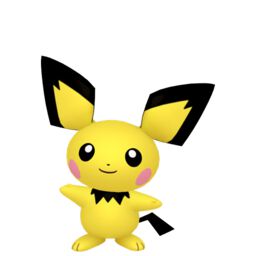
Pichu
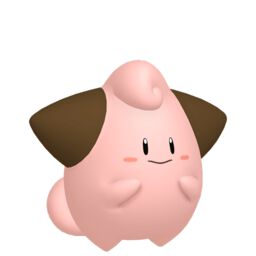
Cleffa

Igglybuff
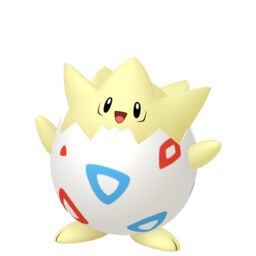
Togepi
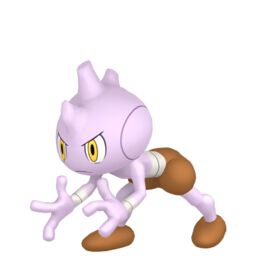
Tyrogue
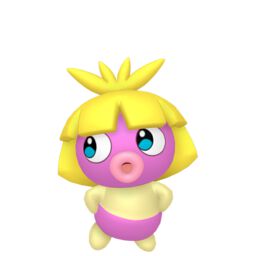
Smoochum

Elekid
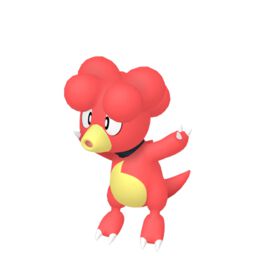
Magby
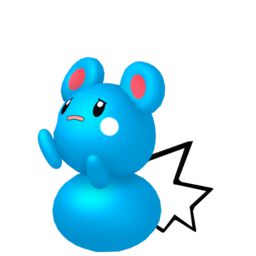
Azurill
Sea Incense

Wynaut
Lax Incense

Budew
Rose Incense

Chingling
Pure Incense
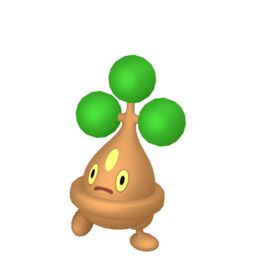
Bonsly
Rock Incense

Mime Jr.
Odd Incense

Happiny
Luck Incense
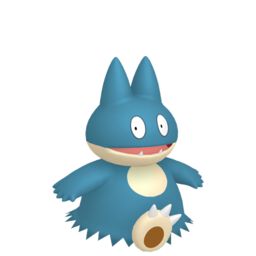
Munchlax
Full Incense
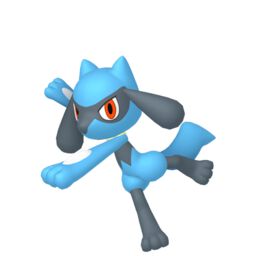
Riolu

Mantyke
Wave Incense
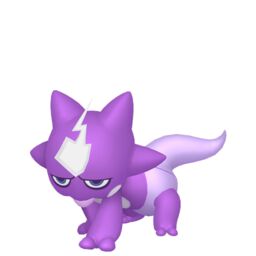
Toxel
Egg group connections
The table below shows how each of the egg groups are interconnected. It gives an idea of how easy it is for a Pokémon to learn a move from another Pokémon. We used to have a graph but there are now too many connections to make it readable.
| Egg Group | Connected to |
|---|---|
| Amorphous | Dragon, Fairy, Grass, Human-Like, Mineral, Water 1 |
| Bug | Dragon, Fairy, Grass, Human-Like, Mineral, Water 1, Water 3 |
| Dragon | Amorphous, Bug, Field, Flying, Grass, Mineral, Monster, Water 1, Water 2 |
| Fairy | Amorphous, Bug, Field, Flying, Grass, Human-Like, Mineral, Water 1 |
| Field | Dragon, Fairy, Flying, Grass, Human-Like, Mineral, Monster, Water 1, Water 2 |
| Flying | Dragon, Fairy, Field, Human-Like, Water 1, Water 3 |
| Grass | Amorphous, Bug, Dragon, Fairy, Field, Human-Like, Mineral, Monster, Water 1 |
| Human-Like | Amorphous, Bug, Fairy, Field, Flying, Grass, Water 1 |
| Mineral | Amorphous, Bug, Dragon, Fairy, Field, Grass, Monster |
| Monster | Dragon, Field, Grass, Mineral, Water 1 |
| Water 1 | Amorphous, Bug, Dragon, Fairy, Field, Flying, Grass, Human-Like, Monster, Water 2, Water 3 |
| Water 2 | Dragon, Field, Water 1 |
| Water 3 | Bug, Flying, Water 1 |
Example: Let's say you have a Pokémon in the Fairy egg group with a move you want to breed onto a Pokémon from the Dragon egg group. There are no Pokémon in both groups so you'd need to find an intermediate group. Looking at the rows for both Fairy and Dragon below you'll see that the groups Field, Flying and Water 1 connect to both. So you'd need to breed the move onto a Pokémon like Pikachu (Fairy/Field groups) then onto a Pokémon like Arbok (Field/Dragon groups).
Egg groups
Each Pokémon is assigned to one or more egg groups, and only Pokémon in the same egg groups may breed.
| Name | Pokémon |
|---|---|
| Amorphous | 86 |
| Bug | 99 |
| Dragon | 81 |
| Fairy | 76 |
| Field | 330 |
| Flying | 85 |
| Grass | 93 |
| Human-Like | 77 |
| Mineral | 96 |
| Monster | 99 |
| Water 1 | 124 |
| Water 2 | 42 |
| Water 3 | 38 |
| Ditto | 1 |
| Undiscovered | 196 |
Examples
Here are some examples to make things clearer!
1. Basic breeding
If we have a female Raichu and we want to get a new one, we can breed it to get Pichu. First we need to find a compatible Pokémon. A Pikachu/Raichu of the opposite gender will always work, otherwise we need to look for other Pokémon in the same egg group.
Raichu is in Fairy and Field egg groups, so we have plenty of Pokémon to choose from! For example a male Shinx, Bidoof, Umbreon or Granbull or over 130 other Pokémon will do the job just fine.
2. Breeding with Ditto
We can breed a male Primeape with Ditto. The baby will be a Mankey. If we bred the Primeape with a female Pokémon then the baby would be that species, not Mankey.
A Pokémon such as Magneton must breed with Ditto to get Magnemite, because it is genderless.
3. Charizard with Dig & Iron Tail
Note: this applies only to Gen 2-5; TMs are no longer inherited and we can reuse TMs at will.
Charizard, like many other Pokémon, can learn the move Dig via TM28. But if you already used the TM then you may be able to breed it onto a Charmander.
Let's assume you taught TM28 to a male Aggron (who has also learnt Iron Tail by level up) and we also have a female Charmeleon. Charmeleon and Aggron are both in the Monster group so they can breed.
When we breed these two Pokémon, the resulting Charmander will know Dig and Iron Tail, since it can learn both those moves by TM (even though Iron Tail was not actually taught by TM). Depending on what other moves the parents know these two moves may overwrite other basic moves like Growl or Scratch.
4. Drapion with Night Slash
Drapion has a cool ability, Sniper, which does 3x damage under critical hits instead of the usual 2x. So it will be quite handy to have the move Night Slash since it has a high critical-hit ratio.
Skorupi/Drapion learn Night Slash through breeding. There is no TM for it, so we will need to breed with a compatible Pokémon that knows the move. Drapion is in the Bug and Water 3 egg groups, so we look there for any Pokémon that can learn Night Slash.
It turns out that Scyther among others learns it at level 45. (Yanmega and Heracross can get it from the Move Relearner, which may be easier.)
So now we just breed a male Scyther knowing the move, with a female Drapion to get a Skorupi that knows Night Slash!
Note: this specific example is no longer required as Drapion now learns Night Slash by level up.
5. Using Smeargle
 In example 3 we taught Dig to a male Aggron. If we had taught it to a female Aggron there would normally be no way to pass the move down through breeding. Enter our good friend, Smeargle.
In example 3 we taught Dig to a male Aggron. If we had taught it to a female Aggron there would normally be no way to pass the move down through breeding. Enter our good friend, Smeargle.
Smeargle is unique in that it only learns one move directly - Sketch - which permanently copies the previous move used in battle. With a male Smeargle we can copy Dig from our Aggron, then breed Smeargle with a female Pokémon to pass the move down.
You can copy any move from any Pokémon (e.g. wild Pokémon), but for more reliable results, you will want to enter a double battle with Smeargle and your own Pokémon with the move you want to copy. There are usually several double battle trainers in the games; Gen 5 also has wild double battles, while Gen 6 has double battle cafes. Note that the competitive
areas like Battle Subway/Maison/Tree or wi-fi battles don't copy the move permanently. Once in a double battle, use Sketch on your companion and voila! You will have your move ready to breed onto any Pokémon.
Smeargle is in the Field egg group, so it can breed with a large number of Pokémon. This also means all Pokémon in the Field group can learn egg moves without chain breeding (see below).
6. Chain breeding
This can get quite complex, but we'll provide a straightforward example. Sometimes a Pokémon can learn an egg move, but there are no compatible Pokémon that get it easily. This is the case with Umbreon and Wish - Umbreon can learn Wish through breeding, but no compatible Pokémon learn it by level up.
Umbreon is in the Field egg group, so we look there. The other Eevee-lutions
can learn Wish via breeding (which doesn't help us much), but so too can the Pikachu/Raichu line. Since they straddle two egg groups we can now look in the Fairy group for compatible Pokémon, where we find Togetic, learning Wish at level 28.
This means we can chain breed Wish from Togetic to Pikachu, then from Pikachu to Umbreon. Here is the process:
- Find a male Togetic (or Togepi) and train it to level 28 where it learns Wish.
- Breed Togetic with a female Pikachu/Raichu to obtain a baby Pichu that knows Wish.
- We need a male Pichu to pass the move to Umbreon, so now we'd keep breeding until we have a male Pichu. It's 50/50 so should only take a few eggs to get one.
- Pichu can't breed, so we need to level up a bit and keep it happy so that it evolves into Pikachu.
- Breed our male Wish Pikachu with a female Umbreon to get an Eevee knowing Wish.
- Now we need to level up and evolve into Umbreon. Of course, we could evolve Eevee into any of the evolutions (Glaceon, Leafeon, etc) if we changed our mind.
Whew! We finally got there! This can be a long process but if you want the perfect moveset, sometimes it's the only way. Note: we did neglect Smeargle in this example. If you have one then you could sketch Wish from Togetic and breed straight onto Umbreon; It cuts out the hassle of breeding and evolving Pichu but it's still the same number of Pokémon.
